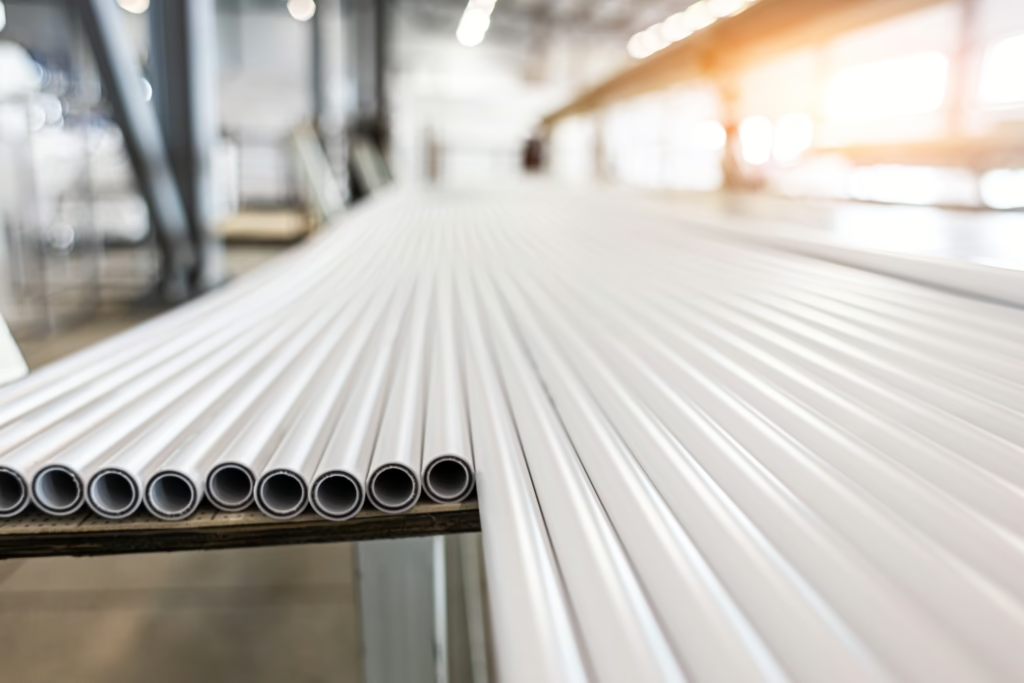
PTFE tubing is an incredibly versatile material that has a wide range of applications across many industries. You might have seen it used without even realizing it—inside your car engine, in laboratories, or as part of critical systems in industries like medical, automotive, and aerospace. In this post, we’ll explore the ins and outs of PTFE tubing, its many benefits, and how it can enhance your projects, whether industrial or DIY.
What is PTFE?
PTFE stands for Polytetrafluoroethylene, which sounds like a complicated name but is actually a simple and very useful synthetic fluoropolymer. It’s best known under its trade name: Teflon, which was first discovered by Roy J. Plunkett while working for DuPont in 1938. Even though it was found by mistake, the properties of PTFE have made it one of the most widely used materials in many industries today.
The Manufacturing Process: Extrusion
PTFE is usually extruded into tubing through a process of extrusion, where fine PTFE powder is forced into a die by means of heat and pressure, creating a long, flexible tube that finds numerous applications. Paste extrusion and ram extrusion are the two general extrusion methods. Paste extrusion is used in the manufacture of smaller-diameter, thinner-walled tubing by combining the PTFE powder with a lubricant to form a paste, and then extruding and sintering—heating just below its melting point—to form a solid tube. Ram extrusion, on the other hand, is used for making thick-walled tubes and rods, where the PTFE Powder or Granular PTFE is formed into a billet and rammed through a hot die to form the tube. The two extrusions provide flexible, high-quality products that can withstand brutal temperatures and exposure to caustic materials.
Key Properties of PTFE Tubing
PTFE tubing’s remarkable properties are what make it a popular choice in demanding applications. Here’s a breakdown of its key benefits:
- Chemical Resistance: PTFE is chemically inert, meaning it doesn’t react with most chemicals, acids, or solvents. This makes it ideal for industries that need to transport aggressive or corrosive fluids without worrying about degradation or contamination.
- Temperature Tolerance: PTFE tubing is highly resistant to extreme temperatures. It can handle temperatures from as low as -200°C (-328°F) to as high as 260°C (500°F). This versatility makes it suitable for environments ranging from cryogenic storage to hot engine components.
- Low Friction: The surface of PTFE has one of the lowest coefficients of friction known, meaning substances are less likely to stick to it. This makes PTFE an excellent choice for fluid and filament transfer applications, as it reduces the likelihood of blockages or jams.
- Electrical Insulation: PTFE is also an excellent electrical insulator. It resists electrical breakdown and is used in the production of insulation for wires and cables, particularly in high-frequency or high-temperature environments.
Common Uses of PTFE Tubing
PTFE tubing, known for its exceptional properties, is widely used across various industries, from medical to aerospace. In medical applications, PTFE’s biocompatibility and chemical resistance make it ideal for devices such as catheters, IV lines, surgical sutures, and other implants, where its inert nature ensures no reaction with body tissues or fluids. In the automotive sector, PTFE is used for brake lines, fuel lines, and high-temperature and aggressive fluids-exposed components like brake fluid and gasoline. In the laboratory and chemical processing plant environments, PTFE tubing has a critical use in transferring corrosive chemicals and fluids without any threat of contamination or degradation. Also, in the beverage and food industry, food-grade PTFE tubing is used in food processing plants since it is non-toxic, can handle high temperatures, and does not transfer taste or smell, thereby being apt for pasteurization or sterilization processes.
For even more protection and performance, PTFE tubing is often combined with PTFE spiral wrap to enhance durability and flexibility. This combination is especially useful in environments where mechanical stress or temperature extremes might otherwise lead to failure.
The Versatility of PTFE Tubing
Whether you need extruded PTFE tubing for industrial fluid transfer or PTFE for insulating electrical wires, there’s a PTFE solution to meet your needs. It’s ideal for environments where other materials might degrade, and its adaptability makes it invaluable across many industries.
Get in Touch with Us Today!
Contact us today to discuss your requirements and get a quote tailored to your needs. Let us provide you with the right solution to keep your systems running smoothly and efficiently.
